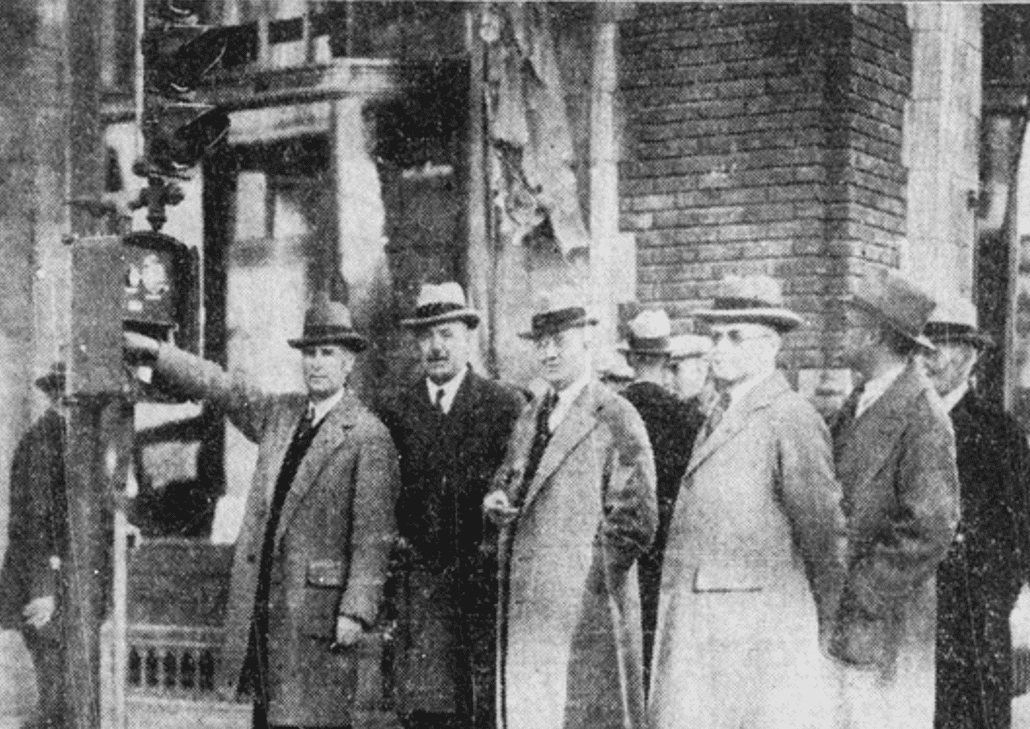The first electric traffic light in the world was developed by the American Lester Wire in 1912. It consisted of two red and green lamps, but Lester did not issue a patent for it. A patent for a three-color traffic light was already received in 1923 by the African-American inventor Garrett Morgan. Read more about when and under what circumstances this original device came to Calgary at calgary-future.
From manual signs to electric traffic lights
In 1931, Calgary’s population was already 80,000. As the number of people grew, so did the amount of traffic in the city, which made traffic on the roads difficult. At that time, the control of compliance with traffic rules was carried out by policemen using hand signals or special signs with the inscriptions “stop” and “go”, which the policemen also held in their hands.
On October 29 of the same year, city officials met to fix the city’s signal system on 7th Avenue. 2 traffic lights were installed. To help Calgarians navigate the new system, announcements have been created with instructions on how to use it.

Clever entrepreneurs then took advantage of the emergence of innovations in the city and came up with a brilliant marketing move – to advertise their business with a tie to the new traffic lights. For example, the Freeman Company, a distributor of Hudson and Essex cars, used the news about the traffic lights as a slogan to advertise special prices on brake adjustments and engine repairs.
For a while, the city even joked that the main entertainment of Calgarians was watching the traffic lights change colors. Pedestrians often gathered near roads to see if drivers had learned the new rules or not.
Expansion of the signaling system
By 1942, Calgary’s traffic light system had doubled in size. All four traffic lights, as well as the street lights, were overseen by two workers, one of whom was Bob Price, who had joined the city’s electrical department right out of high school. One of Bob’s tasks was replacing burned-out bulbs at traffic lights.
Then the traffic light signals were controlled by a mechanical drum. Although there were traffic lights downtown, during rush hour at 8th Avenue and 1st Street S.W. traffic was still controlled by the police using manual signals and hand signals.
After World War II, the baby boom and economic boom caused the population to grow, and thus the number of cars to increase again. The city streets turned out to be too narrow, and there were not enough parking spaces: during the planning of the city, no one guessed that horse-drawn transport would eventually be replaced by cars.
In 1952, Calgarians witnessed the busiest intersection of Kensington Street and 10th Street N.W. in the entire history of Calgary. In June of the same year, new traffic lights were installed. In 1961, traffic problems began again in the city center. Then the authorities blocked some streets to create new parking spaces. City Hall even considered a temporary passenger train to easily get Calgarians downtown from the Bowness, Guysborough and Ogden areas.
1980 was the year of the oil boom. Calgary was developing rapidly, new enterprises and buildings were being built, which also caused road complications. All this led to the appearance of new traffic lights and parking spaces.
In the first two decades of the 21st century, approximately 30 new traffic lights appeared in the city every year. The alarm system has been modernized with reliable signaling: if something does not go according to plan, the light flashes red. Well, in those rare cases when the signal disappeared completely, the city recalled a method of traffic control in 1931 – placing a policeman on the road.


